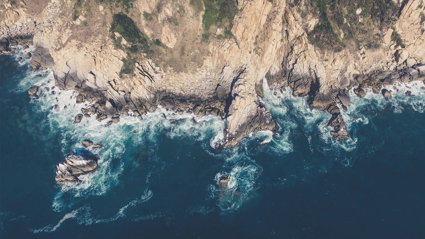
Planning coastal fieldwork
The aim of these two lessons is to give students the opportunity to apply their knowledge of coasts to plan a day’s coastal fieldwork. They will also be able to demonstrate the importance of fieldwork within the study of geography
Key questions
Why is fieldwork important?
Fieldwork makes the study of geography real! Students get an opportunity to apply their knowledge and understanding in a real life setting bringing concepts and theories to life. Fieldwork also enables students to develop new geographical skills ranging from collecting data to analysing results. Planning fieldwork also provides students with an opportunity to take responsibility for their own learning which often improves motivation for learning.
How can I investigate that longshore drift is occurring? What evidence is there that longshore drift is occurring?
Measurements of the height of the sand either side of a groyne will indicate if longshore drift is occurring. If longshore drift is occurring there will be significantly more sand on one side of the groyne than the other. This pattern should be repeated at all the groynes along the beach.
How would I benefit from carrying out fieldwork?
The response to this question should be personal to the individual student but answers are most likely to include: kinaesthetic approach is a powerful learning tool, makes geography real, opportunity to learn new skills, opportunity to experience a new area, opportunity to work with others.
View the RGS-IBG fieldwork resources
Starter
The lesson will start with a whole class discussion about the importance of carrying out fieldwork. You will then be given a guidance sheet detailing how you should approach the task of planning a day’s fieldwork to a coastal area. You need to read the first two sections of the guidance sheet: Your task and What is my fieldwork about?
Main Activity
You will be shown a YouTube clip of waves hitting a groyne. Whilst watching the clip, your teacher will take you through the technique you will use to measure evidence of longshore drift. This involves measuring the distance between the top of the sand and the top of the groyne on both sides of the groyne for a series of groynes on your chosen fieldwork site. You will also be taken through how to record the measurements gathered.
Your fieldwork hypothesis is “longshore drift operates along…….. beach”. Your first task is to identify a suitable fieldwork site. Your chosen location needs to be accessible from your school so that you could visit it in a day. You will need to locate a beach that has groynes on it. Use Google maps to find a suitable location. You should make a note of how long it will take to reach your chosen location and insert the name of the beach where you are going to carry out your investigation into your hypothesis.
Work through the Planning Coastal Fieldwork sheet answering the questions and completing the tasks.
Using all the information from completing the tasks on your planning sheet, write a five minute pitch to be presented to your head teacher to justify taking the class out of school for a day to complete coastal fieldwork. How to write your pitch is outlined on the planning sheet. You will perform your pitch to the class and a senior member of staff.
Plenary
Think about how you would benefit from carrying out more fieldwork in the future and share your ideas with your class.
File nameFiles
File type
Size
Download
